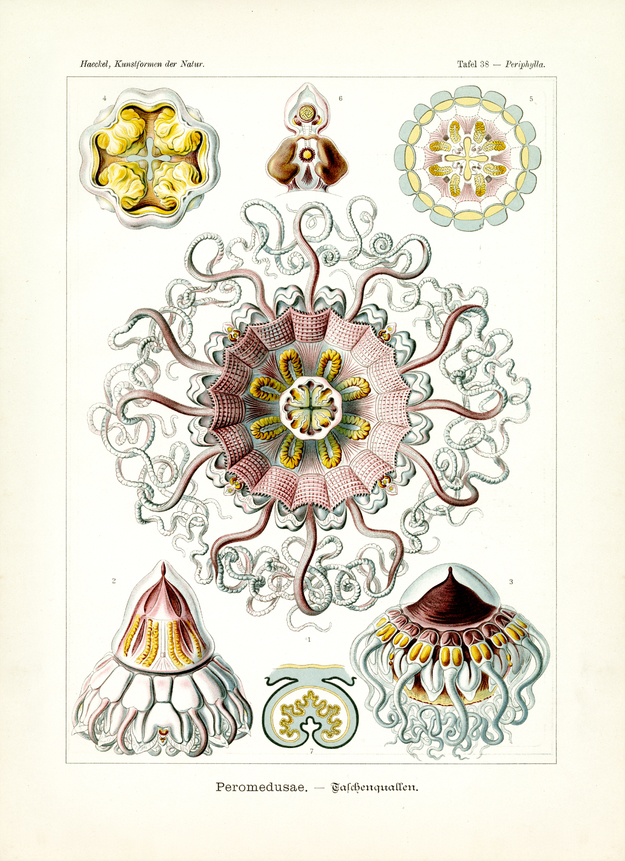Peromedusae form a most peculiar, recently discovered order of magnificent animals from the subclass of Acraspedae (Lappenquallen). Their closest relatives are Discomedusae (Scheibenquallen, plate 8, 18, 28); they are distinguished from these slightly elevated, disc-shaped Medusae not only by the high arch of the conical umbrella but also by the peculiar proportion of the inner body structure. All Discomedusae carry at least eight ‘sense buds’ or Rhopalia (four per-radial and four inter-radial) along the rim of the umbrella; Peromedusae, however, have only four inter-radial ‘sense buds’ of peculiar structure (fig. 6); in the place of the four per-radial Phopalia simple tentacles are found. Incidentally, all Rhopalia of Acraspedae have initially developed out of tentacles in a process of metamorphosis.
The mouth of the Peromedusae (fig. 4) leads into a quadrangular ‘mouth tube’ with four ‘cheek pouches’; the ‘mouth tube’ into a broad, cone-shaped stomach (fig. 2, 3, upper half). Liquid food reaches a ring-shaped broad cavity (Ringsinus) through four long inter-radial stomach cleavages, from here it moves into 16 ‘corona pouches’ found along the rim of the umbrella. Sexual glands (Gonads, in fig. 1 and 2 striking with yellow colouring) are four sets of bulges that project at the lower umbrella plane. In between them eight triangular ‘delta muscles’ and a broad ‘corona muscle’ outward of these are situated, divided into 16 square planes (fig. 1 and 5).
Translation of the original German introduction by Ernst Haeckel:
Phylum of Cnidaria (Nesseltiere); - subclass of Acraspedae (Lappenquallen); - order of Peromedusae (Taschenquallen); - family of Periphyllidae (Blätterkranzquallen)
Translation by VR Translators Bangalore
This is one of the 100 pop science biology illustrations that were published from 1899 – 1904 in Leipzig by Ernst Haeckel through Verlag des Bibliographischen Instituts.
We've scanned the original lithography at 1200dpi on the Epson A3 scanner of A3 scanner huren. You can download a 400dpi JPEG here.
